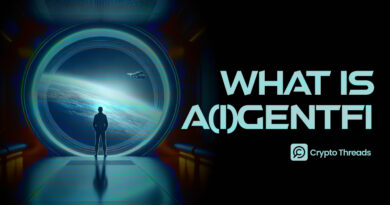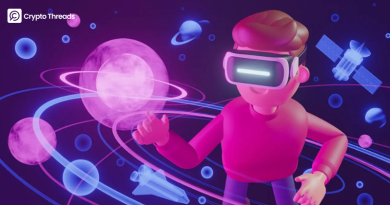Asset Tokenization and the Journey to Transform into Real-World Assets (Part 1)
The real-world tokenized asset (RWA) market is setting new records and has expanded by more than 58% in under two months. The overall market cap of tokenized assets has surpassed $22.4 billion, and given yes votes, this explosion of growth does not seem to be slowing. This guide covers the essentials about tokenized assets, be it what is a tokenized asset, value it provides, working mechanism, technology behind this, as well as associated risks and challenges.

What is Asset Tokenization?

Digital Assets Explained (Source: Chainlink)
Asset tokenization is the act of creating digital tokens representing the value of real assets on the blockchain that can be bought, held, or traded. In short, it makes a digital twin of a physical or abstract asset, enabling quicker and safer transactions.
Throughout the process, a number of additional elements, including blockchain technology and cryptography, contribute to ensuring the security, individuality, and transparency of such digital tokens. Physical assets like commodities, real estate, or artwork, as well as abstract assets like stocks or bonds, can all be represented as tokenized assets.
A revolutionary feature of tokenization is fractional ownership, which allows investors to buy small shares of a high-value asset. According to the Boston Consulting Group (BCG), the tokenized asset market could reach a whopping $16 trillion within the next five years.
How Asset Tokenization Works

Assets That Can Be Tokenized (Source: 4ire Labs)
Depending on the asset type, tokenization is performed stepwise. You can perform tokenization, but the steps differ slightly depending on the type of asset. The process itself can be categorized into 4 major phases.
Step 1: Verify ownership
KYC Legal/Documentation checks validate the owner’s rights to the asset. This is to verify that the asset is not subject to any legal disputes or liens and that the owner has the legal right to tokenize the asset.
Step 2: Move onto a Blockchain Platform
The tokenized asset is transferred to a blockchain platform like Polymath, ADDX, or Stellar that has built-in support for asset tokenization. Using the necessary cryptographic standards, digital tokens that represent the asset are created and smart contracts dictate the rules of managing and trading those tokens.
Step 3: Asset Valuation
Professional appraisers determine the value of the tokenized asset based on market conditions, historical data, and its own characteristics.
Step 4: Initial Token Offering
Assets are made available to investors via private sales, public offerings, or both. Such fragmentation enables a wider and deeper market for assets.
Benefits of Tokenizing Assets
Tokenization is revolutionary and transforms the management and investment of assets, offering investors new avenues. Tokenization is a process that aims to make investing more accessible, efficient, and secure by converting traditional assets into blockchain-based tokens.

Benefits of Tokenization
Making Investments Accessible to Everyone
Tokenization brings down barriers to entry, enabling retail investors to access what have traditionally been institutional markets. High-value assets such as commercial real estate or fine art were once only available to the “big sharks” but can now be fractionally owned, providing investors the opportunity to diversify their portfolios.
Improving Market Liquidity and Efficiency
When blockchain technology is combined with real-world assets, tokenization provides instant benefits:
Enhancing Security and Transparency
For tokenized assets, blockchain’s strong points—consensus protocols, resistance to double-spend attacks, and network uptime—offer unmatched protection. Transfers and sales are traceable, verifiable, and impenetrable due to the fact that holdings and transactions are immutable, updated in real time, and publicly viewable.
This all-encompassing approach to security and openness boosts confidence in tokenized marketplaces while safeguarding investments.
Conclusion
Asset tokenization has transformed our relationship with real-world assets. Tokenization enables matchless accessibility, liquidity, efficiency, and security through the use of blockchain. It revolutionizes classical investments, setting free on the global market the dynamic potential of digital opportunities, paving the way for a financial ecosystem that is more democratic and inclusive.”
As the tokenized asset market is about to reach trillions of dollars in value over the next couple of years, the future of wealth management and investing is definitely digital.



